Akalabeth
 The Game: You start the game by creating a character, Basic D&D style, who enters the world defenseless and just this side of naked. It’s your job to arm and armor your alter-ego, buy plenty of rations, and then set out to explore the world of Britannia, and the treacherous dungeons that lie beneath it. A visit to the castle of Lord British will give you a chance to level up for deeds accomplished, and receive an assignment from him for your next adventure. (California Pacific Computer, 1980)
The Game: You start the game by creating a character, Basic D&D style, who enters the world defenseless and just this side of naked. It’s your job to arm and armor your alter-ego, buy plenty of rations, and then set out to explore the world of Britannia, and the treacherous dungeons that lie beneath it. A visit to the castle of Lord British will give you a chance to level up for deeds accomplished, and receive an assignment from him for your next adventure. (California Pacific Computer, 1980)
Memories: Like so many amateur-programmed Apple II games at the dawn of the 1980s, Akalabeth was distributed via floppy disk in a plastic bag with modest documentation and packaging. So what makes it so special now? Simply put, Akalabeth was also the dawn of a gaming empire – or the origin of one. It was the first computer game programmed and released by Richard Garriott, an avid fan of paper-and-dice role playing games with medieval settings. Both the game and its creator would transform over time – the basic structure of Akalabeth became the basis of the early Ultima games, and Garriott of course became known as his alter ego, the benevolent ruler of the Ultima universe, Lord British. [read more]

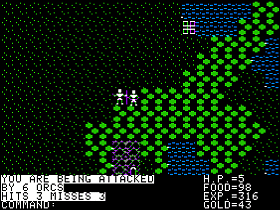 The Game: You set out alone on an adventure spanning countryside, mountains, oceans, towns and dungeons. You can purchase food rations, weapons and armor in the towns, visit Lord British in a castle for his wisdom, maybe a level-up, and your next assignment, or you can venture forth into the dungeons to test your skill against the denizens of the underworld. (California Pacific Computer, 1981)
The Game: You set out alone on an adventure spanning countryside, mountains, oceans, towns and dungeons. You can purchase food rations, weapons and armor in the towns, visit Lord British in a castle for his wisdom, maybe a level-up, and your next assignment, or you can venture forth into the dungeons to test your skill against the denizens of the underworld. (California Pacific Computer, 1981)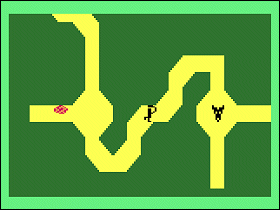 The Game: Your quest begins as you set out from the safety of home to look for adventure in mountainous caverns. When you wander into the dungeons and caverns, your view zooms in to the maze your adventurer is exploring, complete with treasures to collect and deadly dangers to duel. (Mattel Electronics, 1982)
The Game: Your quest begins as you set out from the safety of home to look for adventure in mountainous caverns. When you wander into the dungeons and caverns, your view zooms in to the maze your adventurer is exploring, complete with treasures to collect and deadly dangers to duel. (Mattel Electronics, 1982)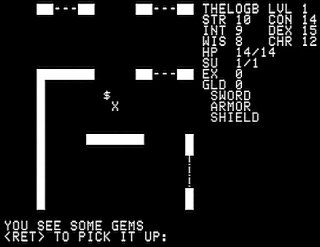 The Game: Using primitive text-based graphics, Telengard books for you a no-expenses-paid vacation through dungeons and hallways full of orcs and other nasties. If you can map the twisty passages, you might just make it back to the Adventurers’ Inn to claim your newfound experience points and heal from your many battles…and if you get lost? There are other inns out there – and many painful ends as well. (Avalon Hill, 1982)
The Game: Using primitive text-based graphics, Telengard books for you a no-expenses-paid vacation through dungeons and hallways full of orcs and other nasties. If you can map the twisty passages, you might just make it back to the Adventurers’ Inn to claim your newfound experience points and heal from your many battles…and if you get lost? There are other inns out there – and many painful ends as well. (Avalon Hill, 1982) The Game: A party of up to four adventurers descends into the depths of a dungeon to recover their kidnapped king and find his magical orb. Along the way, the band of intrepid adventurers will have to fight off everything from packs of wild dogs to evil creatures determined to bring the quest to an early end. (Texas Instruments, 1982)
The Game: A party of up to four adventurers descends into the depths of a dungeon to recover their kidnapped king and find his magical orb. Along the way, the band of intrepid adventurers will have to fight off everything from packs of wild dogs to evil creatures determined to bring the quest to an early end. (Texas Instruments, 1982)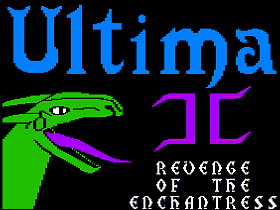 The Game: Not happy with her consort’s defeat at your hands (assuming, of course, that you won Ultima I, the enchantress Minax tracks you down to your home planet of Earth and begins the test anew, sending legions of daemons and other hellspawn to strike you down before you can gain enough power to challenge her. This time, you have intercontinental and even interplanetary travel at your disposal via the moongates, which appear and disappear based on the phases of the moon. Each destination has unique challenges that help to prepare you for the showdown with Minax herself. (Sierra On-Line, 1982)
The Game: Not happy with her consort’s defeat at your hands (assuming, of course, that you won Ultima I, the enchantress Minax tracks you down to your home planet of Earth and begins the test anew, sending legions of daemons and other hellspawn to strike you down before you can gain enough power to challenge her. This time, you have intercontinental and even interplanetary travel at your disposal via the moongates, which appear and disappear based on the phases of the moon. Each destination has unique challenges that help to prepare you for the showdown with Minax herself. (Sierra On-Line, 1982)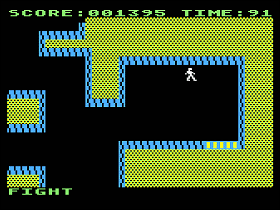 The Game: The player controls a weary adventurer weaving his way through a dungeon populated by treasures and deadly danger. Starting out with the clothes on his back, a short sword in hand, and adding what he can along the way, the player’s adventurer progresses through twisty mazes, vanquishes an increasingly dangerous rogues’ gallery of foes, and tries to gather a wealth of treasure… but even opening those treasure chests may reveal traps. (Epyx, 1983)
The Game: The player controls a weary adventurer weaving his way through a dungeon populated by treasures and deadly danger. Starting out with the clothes on his back, a short sword in hand, and adding what he can along the way, the player’s adventurer progresses through twisty mazes, vanquishes an increasingly dangerous rogues’ gallery of foes, and tries to gather a wealth of treasure… but even opening those treasure chests may reveal traps. (Epyx, 1983)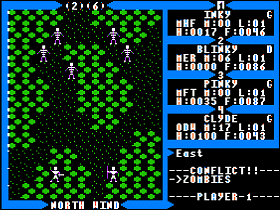 The Game: Darkness has fallen anew upon Sosaria, and Lord British calls for your service again. You set out with four adventurers on a quest to gain the experience that will be necessary to survive the long voyage to a volcanic island where the source of all the evil plaguing the world is said to be. (Origin Systems, 1984)
The Game: Darkness has fallen anew upon Sosaria, and Lord British calls for your service again. You set out with four adventurers on a quest to gain the experience that will be necessary to survive the long voyage to a volcanic island where the source of all the evil plaguing the world is said to be. (Origin Systems, 1984)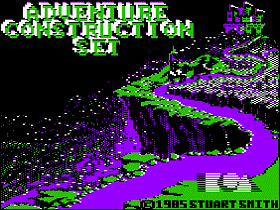 The Game: Digital dungeon masters never had it so good. From the design of tiles and characters to the basic rules governing the player’s interactions with his world, it’s all up for grabs. Items can be placed, their abilities defined, and enemies can be generated. Let the games begin…but is it more fun to create them or play them? (Electronic Arts, 1985)
The Game: Digital dungeon masters never had it so good. From the design of tiles and characters to the basic rules governing the player’s interactions with his world, it’s all up for grabs. Items can be placed, their abilities defined, and enemies can be generated. Let the games begin…but is it more fun to create them or play them? (Electronic Arts, 1985) The Game: Does it ever seem like your computer has a mind of its own? Maybe it does! Activision’s Little Computer People provides computer owners with a virtual three-story house, designed to lure the computer people out of your wiring and into a hospitable habitat. Once a little person has moved into his new home he can be studied and observed, but this is no hands-off experiment. You’ll need to keep your new friend happy and fed to maintain a healthy relationship. (Activision, 1985)
The Game: Does it ever seem like your computer has a mind of its own? Maybe it does! Activision’s Little Computer People provides computer owners with a virtual three-story house, designed to lure the computer people out of your wiring and into a hospitable habitat. Once a little person has moved into his new home he can be studied and observed, but this is no hands-off experiment. You’ll need to keep your new friend happy and fed to maintain a healthy relationship. (Activision, 1985)